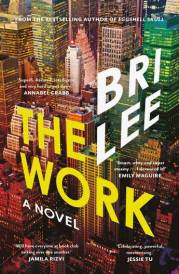Xavier Samuel Spin Out
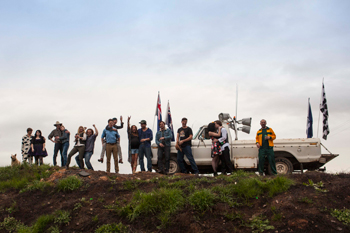
Xavier Samuel Spin Out
Cast: Xavier Samuel, Morgan Griffin, Eddie Baroo
Directors: Tim Ferguson and Marc Gracie
Genre: Romantic Comedy
Rated: M
Running Time: 96 minutes
Synopsis: Billy and Lucy have grown up together in a small, close-knit country town, where they form one of the town's most formidable Ute driving teams.
When Billy takes one risky car stunt too far, Lucy declares she is moving to the city - sending Billy into a spin. Amid the mayhem of the town's annual "Bachelors and Spinsters" party, Billy only has one night to wake up to his true feelings for his best friend - or lose her forever. Spin Out is a fresh, feel-good comedy romance for the young and the young at heart.
Spin Out
Release Date: September 15th, 2016
Trailer
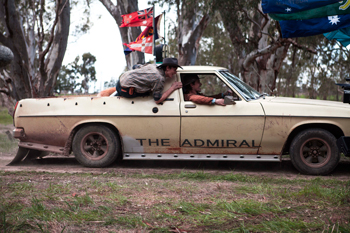 About The Production
About The Production
Spinning into Action…An Idea Shifts into Gear
Recalled Edwina Exton, 'Tim Ferguson had an idea about a B&S Ball that would take place over 24 hours. It was a setting that hadn't really been depicted previously in Australian cinema, so I was very excited and immediately envisaged what it could be like. Instinctively, I knew that it was the project we should start working on."
Unique to rural Australia, B&S balls are social gatherings where, explained Ferguson, 'Young country people meet for an evening of dancing, playing and driving their utes in circles, very fast. There's also heavy imbibing of rum and beer, much lovemaking and lots of fun. There's no party in the world quite like it because at the start, everyone turns up – the boys in tuxedos and the girls in ball gowns – looking tremendous. But then they gradually get covered in mud, dust and beer so that by evening's end, they all leave feeling somewhat -roughed-up'…but also a little bit romantic. We thought that the true B&S story needed to be told, as outside of regional Australia, nobody would believe what people get up to at one!"
So a period of research commenced, with Exton gamely attending many Balls and Ute Musters, where she discovered that -circle work' – in layman's terms, the practice of madly driving a ute, in circles - was a big part of B&S culture.
At a major Ute Muster in the country town of Denilquin, Edwina Exton was stunned by the skill of the professional stunt drivers. 'It was -circle work'," she noted, 'but on a grand scale. As performed at country B&S Balls, -circle work' mainly consists of doing -doughnuts' (rotating the rear or front of the vehicle around the opposite set of wheels in a continuous motion) in your car and might involve a few -figure eights'. But these professionals performed an incredibly choreographed car routine which I videoed and showed to Tim Ferguson. He agreed that it was amazing and needed to be in our movie."
Tim Ferguson continued the story, 'Edwina Exton returned from a B&S Ball and said, -you know that now they have these car competitions.' As a kid in the country, we'd jump into a ute and go down to the back paddock, where Dad couldn't see us, and drive around like idiots. I'd never realized that somebody had actually turned this into a sport where you could win prize money! It just had to be part of the story, as the idea of going to a dance and then dancing in your utes was irresistible. And nowadays, -circle work' competitions are major events. Ute Musters like the one in Deniliquin attract up to 30,000 people with thousands of utes competing for big prize money. It's a stunningly odd sport where you drive very fast but don't actually go anywhere."
Spin Out tells the story of Billy and Lucy - friends since childhood, but polar opposites. He's reckless and irresponsible, whilst she's practical and not prone to taking unnecessary risks. But when Billy impulsively performs a particularly dangerous stunt at a -circle work' event – and endangers both their lives – Lucy finally loses her patience and announces that she's leaving for the city. Suddenly, Billy realises that he might just love this girl, but he only has one night – at the town's annual B&S Ball - to win her heart.
This tale unfolds amidst a tightly interwoven community of characters – all of whom have their own stories about love, told in different ways.
'Our secondary characters," reflected Edwina Exton, 'almost threaten to -take over' as they have such interesting storylines, all of which relate to the central story of Billy and Lucy. For starters, we have Sparrow, a sweet but naïve virginal kind of guy who's close to Billy and Lucy. When it came to Sparrow's love interest, we thought it would be funny to pair him with a woman who seemed unconquerable, so that's where Mary, the town's most formidable girl, came from.
There's also Lucy's brother, Tubby, his mates Rooter and JJ, and their girlfriends Shazza, Merline and Taylah, all of whom are facing their own romantic dilemmas. Creatively, these six presented a challenging unit, as they needed to present as distinct individuals, yet operate together as three couples. But although realism was important, there still had to be some exaggeration for the comedy to work.
Plus we have Nic and Sacha, a shallow brother and sister from the city who crash the B&S Ball intent on scoring a one-night stand with a -gullible' local. Superficially, these two represent the ultimate love interest, in that they're sophisticated and physically gorgeous. But we wanted to show that there was more to them than immediately apparent. We learn that despite her dazzling appearance, Sacha has an empty love life, whilst her brother, Nic, finds aspects of the world that they're visiting, unexpectedly appealing."
Along with love, commitment, whether to a partner, or the country lifestyle, was another theme that both writers were also keen to explore.
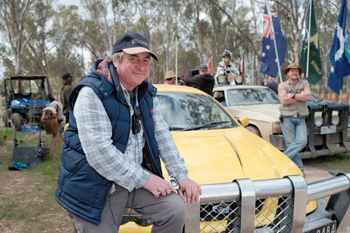 One way or another," said Tim Ferguson, 'everyone is travelling in circles. Billy and Lucy – the hero and the heroine of the film – take a big circle to find out what they should have known from the beginning, which is, of course, that they're meant for each other. And underneath it all, is love – and you can't have love without commitment. It was important to tell this story of young people in love, and to place them in a remote setting where there is no escape. Nothing is coming to make things more interesting for them. They have to find each other and make love work even in what could be described as the most difficult of circumstances. We've tried to tell a funny story about people under pressure, which is essentially the pressure of youth and the choices that entails.
One way or another," said Tim Ferguson, 'everyone is travelling in circles. Billy and Lucy – the hero and the heroine of the film – take a big circle to find out what they should have known from the beginning, which is, of course, that they're meant for each other. And underneath it all, is love – and you can't have love without commitment. It was important to tell this story of young people in love, and to place them in a remote setting where there is no escape. Nothing is coming to make things more interesting for them. They have to find each other and make love work even in what could be described as the most difficult of circumstances. We've tried to tell a funny story about people under pressure, which is essentially the pressure of youth and the choices that entails. Spin Out also defied the dictates of budget so often exercised with Australian films. 'Australian writers are encouraged to keep budgets in mind," observed Tim Ferguson, 'in that you're not supposed to have death stars, gigantic explosions, costly special effects or hundreds of characters. But we thought that we'd just write the story with all the characters, the car action and this gigantic party and leave it for the producers to sort out. At the end of the day, writers shouldn't feel inhibited by budget. You write what you want to write, and then find a grown-up to pay for it!"
The first grown-up (producer) to come on-board was Marc Gracie, one of Australian comedy's most experienced practitioners, who joined the project at the start of 2013. With a friendship and working relationship spanning thirty years, Marc Gracie was approached by Tim Ferguson to initially produce, before they decided to co-direct.
Marc Gracie recalled his first impression of the script. 'It was pure fun and handled a big ensemble of characters extremely well. Very few scripts are able to give voice to so many people – and in this film there are literally twenty plus characters who have substantial storylines. I also felt that with 'Lucy" there was an opportunity for a good female character which, dare I say it, is hard to come by in Australian scripts. So I worked with Edwina Exton and Tim Ferguson in focusing on Billy and Lucy, which, in the process allowed the script to become warmer and more about the romance and not just the B&S Ball and the antics that happen therein.
One of the other great things about the script – and it's gold if you find it - is discovering a culture that hasn't previously been portrayed on-screen. Hollywood spends its whole time doing it. Not only have we got a fresh culture via the B&S ball, but we also have a car culture that hasn't been depicted. So this was my other immediate response to the script."
Producer David Redman, whose experience on Australian regional comedies such as Charlie & Boots and Strange Bedfellows proved invaluable, joined the team next. Having worked with Marc Gracie previously, Redman was the obvious choice to tackle the many logistical challenges Spin Out presented. His involvement also allowed Marc Gracie to concentrate on co-directing with Tim Ferguson.
'The idea of co-directing often confuses people," observed Marc Gracie. 'It harks back to the auteur theory of direction, but Tim and I have worked together a lot – whether I've been the producer and he's been the talent, or a writer or co-producer or whatever. At the end of the day, we were like-minded as to how the film should be. How a joke works is a pretty singular notion – regardless of whether it's high comedy or low comedy - and we both know a joke when we see it. We never argue, but just sit and laugh together. It's that simple."
Tim Ferguson concurred. 'Marc Gracie and I have been working together, trying to be funny, for thirty years. Sometimes failing dismally but we always make an attempt. I was getting around in a wheelchair for most of this shoot, and as there were no nice cement paths at our locations where I could be pushed along, Marc Gracie would be the -body man' with the cast. He was the one who would run over to speak with the actors, and then return.
In terms of the characters' motivation, I was always focused on the big picture, whereas Marc Gracie is very good at dealing with the particulars – try a line this way – or try and stress this – look for these moments. But as we generally agree on what's going to make something funny and genuine, it was a fairly simple process, and easy for the cast. And it's always great to work with Marc. He's a fearless, funny guy with batteries that don't run out. He doesn't stop and I admire that very much.
Wanted…a Jackaroo and a Jillaroo
'On face value," said Marc Gracie, 'Spin Out is very Australian because we're not only dealing with Australian characters but Australian regional characters. Nor did we want them to be clichéd – they're very real. But the comedy, interestingly enough, is actually quite broad and often sits within set pieces like beer drinking competitions, windmill showers or people being blown-up in toilets. So although there are very broad comic moments, we still wanted the dialogue to be naturalistic.
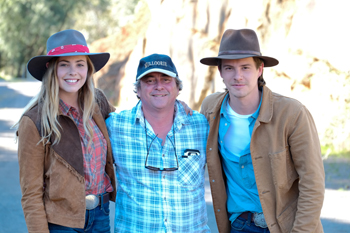 Our characters never crack jokes like they might in an out-and-out comedy. Instead, we have several largely comic incidents, which allowed them to be human and for the comedy to work on a broader level. The laughs are there, but they don't debase the characters and their dramatic stories. We wanted our cast to -play it for real' and for those comic set pieces to work alongside their stories. They might have dramatic asides, but they still make you smile, which is what we were working towards. So in the end, you have a film with some lovely, romantic story arcs, but also terrifically broad comic moments.
Our characters never crack jokes like they might in an out-and-out comedy. Instead, we have several largely comic incidents, which allowed them to be human and for the comedy to work on a broader level. The laughs are there, but they don't debase the characters and their dramatic stories. We wanted our cast to -play it for real' and for those comic set pieces to work alongside their stories. They might have dramatic asides, but they still make you smile, which is what we were working towards. So in the end, you have a film with some lovely, romantic story arcs, but also terrifically broad comic moments. And is the comedy Australian? Well, I guess it is, although you could also have a beer windmill in Texas or India! But Tim and I worked very hard at the script's tone, which is one of the most elusive things in filmmaking, let alone in comic filmmaking, and a lot of that is down to casting."
In their quest to cast the two right actors to portray Billy and Lucy, talent, charisma and on-screen chemistry were paramount.
'Billy," observed Tim Ferguson, 'is a wild creature. He takes risks without thinking and that's what's going to jeopardise his chance of ever getting the girl that he's just realized he loves. Of course he's very attractive to -hang' out with - everybody wants a friend like Billy – but once you have a close look, you realise that something's got to change. He's in his mid-twenties and it's time for him to start making decisions and stop being a kid. He's lovable, but dangerous."
After a long search, rising international star, Xavier Samuel, was cast. With recent credits such as Frankenstein, Fury, Healing and The Twilight Saga: Eclipse, Samuel had the experience, talent and leading man presence needed for this enigmatic character.
'Billy is a bad boy," said Marc Gracie, 'and cinematically, bad boys are very appealing to young audiences - particularly young female audiences, as most women like bad boys! So we wanted somebody who was gorgeous – and Xavier Samuel fit that bill – and who could -carry' the film. Xavier Samuel has amassed a canon of work both here and in Hollywood and was capable of handling the role's comic and dramatic arc because within the story, Billy's character gets deconstructed and hits an all-time low.
When Tim Ferguson and I met with him, we realised that he hadn't really played a role like this. He's done horror, war movies and broadly farcical comedy, but Billy is a raffish guy with a crooked style and when we met Xavier (and I hate to say this, but it's true) – we thought he was like a young Harrison Ford. And because he's so likeable, he's able to play an essentially unlikeable character. So we cast Xavier Samuel because he was perfect for the role – plus he's a terrific actor and really good looking…which I really hate."
'What I loved about the script," observed Xavier Samuel, 'was that it kind of read like a classic rom-com reminiscent of those screwball comedies of the late 30s and 40s such as Bringing Up Baby and His Girl Friday. It had a really classic feel, with a dry, Australian sense of humour. But there's also a slapstick element as there's a degree of one-upmanship to all the relationships. And Billy and Lucy's relationship reminded me of Benedict and Beatrice In Much Ado About Nothing, as they basically spar with words. I think that if they admitted to their feelings, it would somehow put their relationship in jeopardy. Plus I suspect that Billy is too absorbed with himself to notice how anybody else is feeling. His declaration of love just sort of -comes out' because of the intensity of the B&S Ball, plus she's threatening to leave for Sydney. So if he doesn't tell her how he feels that night, he'll never have another chance."
The gorgeous Morgan Griffin – another young Australian actor on the fast track to international stardom - was cast as Lucy, the beautiful, gutsy, Jillaroo who refuses to settle for second best.
'I immediately responded to script's humour," said Morgan Griffin, 'and liked the way that Lucy -holds her own' in what is a predominantly male sport. She's also the sort of girl whom everyone else goes to for advice as she's a strong, self-assured character."
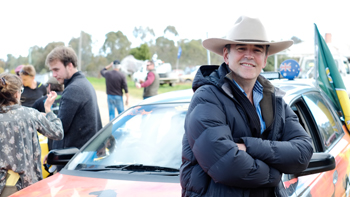 Taking a -leap of faith', the filmmakers were unable to test Morgan Griffin and Xavier Samuel together prior to being cast, as Morgan Griffin was overseas at the time and had auditioned via tape. 'Not being able to test our two leads together, scared the hell out of us," admitted Marc Gracie. 'And doing a romance in Australia is unusual – not to mention doing it with cars. But to our elation, they clicked straight away. They also had to kiss a lot, which as director, I can tell you is hard to do convincingly. But Xavier Samuel and Morgan Griffin do it really well. Plus they were both willing to work at making it look great and not be, -uugghh, I've got to kiss that person.' In fact, they couldn't wait! And can you believe that on one day, Xavier Samuel not only got to kiss Morgan Girffin but also Christie Whelan Browne who plays the blonde and beautiful Sacha. Tough job."
Taking a -leap of faith', the filmmakers were unable to test Morgan Griffin and Xavier Samuel together prior to being cast, as Morgan Griffin was overseas at the time and had auditioned via tape. 'Not being able to test our two leads together, scared the hell out of us," admitted Marc Gracie. 'And doing a romance in Australia is unusual – not to mention doing it with cars. But to our elation, they clicked straight away. They also had to kiss a lot, which as director, I can tell you is hard to do convincingly. But Xavier Samuel and Morgan Griffin do it really well. Plus they were both willing to work at making it look great and not be, -uugghh, I've got to kiss that person.' In fact, they couldn't wait! And can you believe that on one day, Xavier Samuel not only got to kiss Morgan Girffin but also Christie Whelan Browne who plays the blonde and beautiful Sacha. Tough job." A steady stream of actors auditioned for the roles of Sparrow and Mary – the film's secondary romantic couple. For Sparrow, the earnest innocent who is Billy's best friend, the filmmakers envisaged someone who echoed the character of 'Snowy" portrayed by David Argue in director Peter Weir's Gallipoli - a wonderfully quirky young Australian guy who serves as a siphon for much of the story.
'Sparrow is quintessentially Australian in the way he operates and relates to other people," explained Marc Gracie. 'We auditioned Travis Jeffery a few times and fortunately for us, cast him. Then he went to New York for a month and he actually became Sparrow. He's such a clever young actor, but I don't know what he did in New York to achieve that transformation. When he started filming, he was a 100 times better than even when he auditioned!"
Said Travis Jeffery, 'The script was extremely funny because it was so relatable. Comedy comes from truth, and having grown up in the country, I sort of knew every character. Sometimes it veered towards slapstick but mostly it was really naturalistic humour, which I think is the most comical."
'Casting Mary, was tough," recollected Marc Gracie. 'In the script, she's an outsider with a facade that doesn't invite people into her emotional world. And here's Sparrow, this sweet young guy, who is obviously very interested, but he can't break her veneer…and neither can she. We weren't having any luck finding somebody who could play both comedy and drama. But one evening I happened to watch the television series, Winners & Losers, and caught Melissa Bergland's performance. I thought her very interesting, so invited her to audition and she nailed Mary straight away. Melissa Bergland allowed herself to be that character and it's actually quite hard for young actors to play angry, non-romantic people.
For her part, Melissa Bergland relished inhabiting the persona of this complex girl. 'Mary has a stony exterior, with low energy, and a calculating, bitchy, comedy style which is a wonderful contrast to Sparrow – played by Travis Jeffery - whom I have most of my scenes with. It's a funny dichotomy of this very still, haunting, gothic chick and this bubbly bright dude in a cow onesie, who's like, -Hey guys, what are we doing today?' Deep down, I do feel that Mary wants a relationship, but she's terrified she's never going to have one, so her reluctance to engage with people on an intimate level is because the thought of what she really wants, secretly scares her."
'When Sparrow and Mary were in kindergarten," deadpanned Travis Jeffery, 'Mary tied his bootlaces and from that day on, Sparrow has been deeply in love with her and has known that fate will ensure she will be his woman and he will be her man. He sees through her scary persona and although she terrifies him – as she terrifies everyone - he's interested in what's on the inside."
Melissa Bergland also created a backstory: 'I think that Mary's the daughter of the local pastor and her mother works for the Country Women's Association, and that she has done just about everything possible to rebel against them. Once she had to go to church every Sunday, and now she hails Satan. When I was cast, Tim Ferguson and Marc Gracie asked how I pictured her, and I said, -I think she's the only -Goth' in the village!' I suspect that she goes home and makes voodoo dolls of all the other characters because nobody understands her. She's -Scary Mary' and most of townsfolk are petrified of her - especially Sparrow. As for whether we're similar, you'd have to ask around…but all of Mary's jewellery is my own. Aphrodite, our costume designer, asked me what I had in the way of gothic, silver jewellery, and I said, -Well…!' and showed her my collection."
Other key players in the ensemble cast included Lincoln Lewis and Christie Whelan Browne, as city slickers, Nic and Sacha, Mark Nicholson as the verbose Tubby, Brendan Bacon as JJ, a man of few words, Thomas Blackburne as the good-natured, but non too bright Rooter, and Lisa Kowalski, PiaGrace Moon and Aileen Huynh as their respective girlfriends, Shazza, Taylah and Merline.
Hollywood…Pinewood…Cinecittà… and now...Shepparton!
Authenticity was always a major factor with Spin Out as the last thing the filmmakers desired was an environment for their characters that seemed contrived and artificial.
'We wanted people to be able to recognise themselves and their friends," said Tim Ferguson. 'And that applied to people in urban settings too. Remaining true to Australian people in the bush was essential. We didn't want to make a pantomime or for our characters to be like glove puppets. This is a celebration of country living where one of the driving issues is, -how do we make living in the bush work? We're young, but things are hard here, so how are we going to survive?' Hopefully people in the bush will look at our depiction of living in the country, and say, -Yeah that's what it's like.'"
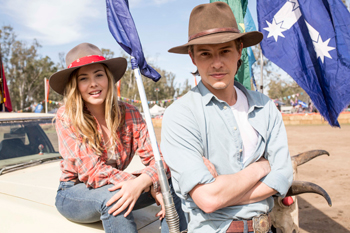 The quest for a believable locale led to many discussions.
The quest for a believable locale led to many discussions. 'Originally," said producer David Redman, 'we planned to shoot on a Melbourne sound stage and then on location for some of the more atmospheric scenes. But having previously shot films in the country, I knew that there was a level of authenticity that we'd achieve by doing the film that way. There's a vibrancy that you get and actors are very intuitive, so on a performance level it really helps for them to be around genuine country people, like those we were trying to depict. So we knew that we wanted to be sufficiently far from Melbourne so that it was the country, but not so far that it would be logistically difficult.
Marc Gracie and, to a lesser extent, myself, had filmed previously in, so we knew that their local Council were incredibly supportive. And Shepparton has been through something of a -rough patch' in recent years, so we liked the thought of bringing some excitement to the town and -circle work' is definitely part of the fabric of their community. When we found Shepparton's Emerald Bank Leisure Land and realised we could turn it into a studio and shoot the whole film there, everything clicked. So we stopped looking and just focused on how we could make that location work."
'Shepparton really embraced us," recalled Marc Gracie. 'We shot 98% of the film at their Emerald Bank Leisure Land where we built everything from the arena to the camping location to the B&S ball venue. Doing so enabled us to create the right world, which was very important for this film because it draws from a genuine culture."
'It's a real car town," added Tim Ferguson. 'Every night, outside my hotel, I'd hear cars revving their engines at the lights, getting ready to zoom off and race each other. And there were classic cars and utes everywhere. Being surrounded by all of these vehicles was a great experience. And it's ironic, as I don't even have a licence – so I was living vicariously through this experience."
Despite the fantastic local community support, there were still multiple issues to be overcome in filming entirely on location in a regional centre. In addition to the sets, the shoot's entire infrastructure had to be created to house the many different departments
'We literally built a studio on the outskirts of Shepparton, said Redman. 'Maintaining that and involving the local community was essential and had the spin-on effect of ensuring that the cast and crew were really welcomed and had a great time. We needed to embrace the world that we were trying to portray, as we didn't want to be -outside looking in'. We wanted to be part of it, which is why we effectively had locals, who were part of the shoot, camping on-set for the majority of filming, which is not a traditional way of making a movie! But on this occasion it worked, and was how we overcame several challenges. Many of our cast and crew also developed a genuine affection for Shepparton and, more importantly, its people, who dedicated so much of their time and energy to help tell our story as authentically as we could."
Ute-Mania
'Months before we started," noted Redman, 'we used Facebook to attract assistance from the Circle Work/Ute Muster community. From experience, I knew that we'd need to embrace the elements that form those groups gently and over a long period of time. So we established a Facebook page around the idea of a Shepparton Ute Muster and B&S Ball, and the queries started rolling in. Many people were excited, whereas others were a little wary as they'd encountered other filmic projects that hadn't depicted their world in a way that was particularly true to their essence, which was all about friendship, community and support. So we really took the time to alleviate their concerns. Once they started trusting that the world that we wanted to show was as real, loving and warm a portrayal as we could make it, we had no problem, and it just became a matter of filtering their enthusiasm through the creative process to get the best result on camera.
We had close to three hundred photos of utes submitted, so selected the ones we thought would work best. At one point, we had fifty to sixty vehicles on-set. Including our core group of six that did the actual -circle work'. Each night three security guards watched over them, plus we had three people in our vehicle department for the mechanics.
The -display' utes didn't generate a lot of upkeep as they were there to create atmosphere, but that wasn't the case for 'The Admiral" - our main hero ute, which Billy drives. We deliberately purchased an old -banger' as we felt it was more important to find something that looked right and just work on the mechanics, rather than vice-versa. To quote one of our team, 'The 'Admiral" looked as though it had been, -buried and crawled out of the ground'. Although it required daily maintenance, we actually developed a great affection for it, as it was a unique beast of a machine."
'The Admiral" was dressed with a longhorn skull on the bull-bar and offset with naval flags, including a tricolour Admiralty flag. Conversely, Lucy's ute -named 'You Can't Touch Me" - was immaculate and reflected her fiercely independent, optimistic personality by sporting canary yellow duco and black flame decals which hinted at her rebellious streak.
In keeping with B&S tradition, the other utes were decorated with Flags, flags and more flags, along with aerials, CB antennas, bumper stickers, cattle tags, stubby holders and the obligatory swag, thrown into the back.
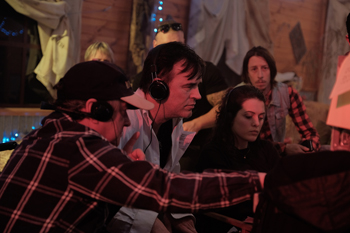 'None of us had really driven a manual car prior to shooting," said Griffin, 'but we learned how to on the second day of pre-production. Then we attended Shepparton's Decca Driving School and were taught how to -drift' a car – which I never thought I'd be able to do. From there, we progressed to using the throttle, steering in and out of the drift – how to slip the diff – (I don't really know what that means, but our stunt coordinator said it was very important!) and how to do burn-outs and fishtails. On the day of filming, Xavier and I actually did the arena routine, which was pretty cool."
'None of us had really driven a manual car prior to shooting," said Griffin, 'but we learned how to on the second day of pre-production. Then we attended Shepparton's Decca Driving School and were taught how to -drift' a car – which I never thought I'd be able to do. From there, we progressed to using the throttle, steering in and out of the drift – how to slip the diff – (I don't really know what that means, but our stunt coordinator said it was very important!) and how to do burn-outs and fishtails. On the day of filming, Xavier and I actually did the arena routine, which was pretty cool." 'It was nerve-wracking," recalled Samuel, 'but when we watched our instructor going around in circles, doing crazy burnouts, it really got our hearts racing. You just hope that you're not going to roll the car and take out a bunch of crew on the day you shoot the scene! But it's addictive and once you realize that it's relatively safe and you're not going to kill anybody, it's just fun."
'On the day of filming," recounted Bergland, 'the script said, -Mary does a fishtail and exits the arena'. Well, I did the fishtail…but it wasn't a 100% intentional and as I hurtled towards the safety barrier, I saw the whites of the security guard's eyes. We both looked extremely terrified, as I nearly hit him. But I managed to straighten the ute and exit. I'm sure it was a good take!"
'These characters," opined Marc Gracie, 'portray their feelings through their cars and how they drive them and that's how the film works. The cars reflect what's happening to the characters until the end. You might call it action but it's actually drama. And we were able to train our actors to drive these cars as they needed to be driven. On face value, it looks pretty simple - cars going around and around in circles. But as anybody who has ever tried that knows, it's actually very hard to do once, let alone 20 times in a row. But the stunt team did a great job teaching them and they literally did most everything that the cars do in the film, which was a dream come true, because it meant that we didn't have to fall back on filmmaking tricks such as basic montage or CGI. Everything you see is pretty much down to them – to the point where Xavier Samuel jumped out of a moving vehicle that circles around him. It was beautiful."
The filming of the major -circle work' sequence was approached like a live event, with all cameras rolling simultaneously, Shot over a weekend with many Shepparton locals as extras, Director of Photography, Justin Brickle, utilised three Arri Alexa Classic cameras, along with a Canon c500, a drone equipped with a Panasonic GH4 digital camera and 3 GoPros that were placed in specially designed housing so that they could use polarisers and neutral density filters to achieve a cinematic look. Key Grip, Tony Hall, also designed an assortment of camera rigs for the vehicles, which included mounts for the side doors, bull bars, roofs and various other body parts to capture the action and show that the actors were performing the actual stunts.
'The great thing about a Ute Muster," said Tim Ferguson, 'is that the cars aren't actually travelling anywhere. They're like Lipizzan horses, which meant that we didn't have to continually move the cameras. We could just position them and let the cars do what they needed to. There are some of shots that look virtually impossible – where you'd think, -this must be CGI' – but Xavier Samuel and Morgan Griffin were behind the wheels, doing the stunts themselves, which was high-octane fun. And Morgan Griffin is now is a total petrol head."
Design Essentials
The distinctive, yet authentic visual style for both production and costume design was geared at creating a heightened, upbeat environment, rich in detail and texture.
As the action takes place over 24 hours, there weren't many opportunities to establish the characters through multiple costume changes, so the wardrobe choices for each actor were crucial.
'I was aiming for the nostalgic, romantic look of youth," said Costume Designer, Aphrodite Kondos," so wanted to capture beautiful memories of significant times, like one's first love, or kiss. I also wanted these images to resonate with the audience, as so much memory is transmitted through the clothes we wear at certain times in our lives."
With a little help from her friends Shazza, Taylah and Merline, tomboy Lucy emerges as the -belle' of the B&S ball in a gorgeous red dress. 'We needed a jaw-dropping moment for Lucy's -reveal'," explained Aphrodite Kondos. 'Red is not a colour that everyone can wear, but Morgan is one of the few people who can. I tried many colours on her, but red was the most obvious choice. I also wanted something that would make her stand out from the rest of the crowd.
As for Billy, it's a B&S tradition that attending males wear tuxedos of all states and styles, so I knew that Billy and his mates would all be wearing them. But although I dressed Xavier/Billy in a tux, I wanted him to be different to every other guy in proximity, so after discussion with Xavier Samuel – who contributed greatly to Billy's look – I gave him a waist coat and jacket so that as Billy becomes progressively dishevelled throughout the night, his wardrobe starts unravelling – a look that the layers of clothing helped to achieve.
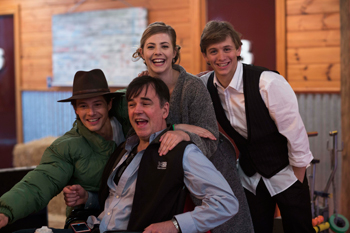 'I absolutely love Ken Hannam's 1975 classic, Sunday Too Far Away, as it had integrity," noted Production Designer, Ralph Moser. 'There was something raw and real about it. Even if you have never been inside a woodshed you know that what you are seeing is genuine, because of the honesty of the filmmaking. The same also applies to comedy, I wanted to reflect the reality of the outback B&S culture but apply a cinematic aesthetic.
'I absolutely love Ken Hannam's 1975 classic, Sunday Too Far Away, as it had integrity," noted Production Designer, Ralph Moser. 'There was something raw and real about it. Even if you have never been inside a woodshed you know that what you are seeing is genuine, because of the honesty of the filmmaking. The same also applies to comedy, I wanted to reflect the reality of the outback B&S culture but apply a cinematic aesthetic. The very nature of a B&S Ball is that that they start as sober affairs, but rapidly descend into a drunken, feral mess. But I wanted to avoid their -down and dirty' aspects, so tried to strike a balance of what was authentic yet cinematic. We achieved this by adding a slightly bizarre carnival atmosphere with a hint of sideshow to the overall landscape, and lifted the exteriors with brightly coloured tents and props, larger-than-life signage, countless runs of festoon lighting and a sea of flags to add movement and interest just above head height to break up the expanse of the night sky. As the evening temperatures frequently fell to near zero, we set-up braziers that attracted hordes of shivering extras, but also looked great on camera. It was our aim to keep the frame in camera busy at all times, so we were forever dressing to shot, to cram the frame with detail.
For the actual B&S venue, we opted for a neutral yet warm palette to offset the colour and allow the cast and their wardrobe to -pop'. Hundreds of metres of fairy lights and party festoons were strung as a lit canopy over the expanse of the interior, to assist ambient lights levels and accommodate the camera. This allowed us to shoot, 'live' without necessitating huge lighting resets. The overhead festoons were custom made as everything has moved toward LED's and we really wanted the warmth that is characteristic of incandescent lighting. The interior also featured much rustic detail. We applied woolpacks to wall panels to allude to the history of the venue and augmented that with seating areas built from hay-bales and recycled cable drums for tables. We used the torn woolpacks to create primitive drapery for the windows and even used bale twine as tie- backs.
There was also a dark and uninteresting corner by the bar that needed a feature. My wife, Shelley, had this crazy idea of making a condom lamp, which I initially thought was ridiculous, but as it turned out, looked like a modern piece of art. It was constructed from inflated bright blue condoms lit from inside and made everyone who saw it, smile."
One of the film's climactic scenes involves Sparrow, who after an unfortunate incident with a Portaloo, decides to cleanse himself, and the guests, with a beer shower that he hooks up to a windmill. This transforms the surrounding area into a swamp, which paves the way for the traditional post B&S mud fight.
'The pairing of two Australian icons such as a windmill and beer," recalled Ferguson, 'became a construction problem for the design department, the safety department and just about everyone. So you get a bunch of guys, who scratch their heads and the next thing you know, you have a windmill spraying beer everywhere. But seriously, it was a nightmare from day one.
We knew it was going to be extremely cold - particularly as it was going to be shot late at night - but that everyone had to look as though they were having summer fun in the mud. So we had a heated tent where the actors could go between takes – before jumping back into the mud. We also had a line of little portaloo showers on standby. And of course for Wardrobe, the whole idea of a mud fight was a nightmare. But oops – once you've had the idea, you've got to make it work. Again, call a producer, get a grown-up, Get Marc Gracie and Redman…!"
'Everybody," noted Marc Gracie, 'was terrified of staging this mud fight - from continuity people (what's the mud going to look like when you're shooting out of order and we need a post-mud look?), to the safety of the mud (how deep is it?), to what colour it would be, because black mud photographs really badly - so we even had to cast the colour of the mud! Luckily Ralph Moser found the perfect colour and literally built a mud pit that was reasonably deep. The actors had the time of their lives but hated Tim Ferguson and I for about a week afterwards, because they probably kept finding mud in just about every orifice."
Recalled Moser, 'We transported a windmill to set, anchored it to withstand the wind gusts prevalent in the region, and from there, ran an additional pipe up its middle that concealed a light gauge fire hose and spray fitting with a nozzle that was aimed directly into the windmill's blades. The line was filled with AAF foam to simulate the raining of beer suds and connected to a fire pump and heated water tank so that people wouldn't freeze to death during filming.
We then rigged a series of actual beer plumbing connectors together and attached them to a series of near empty kegs that contained just enough gas to keep them active, so that when Sparrow finally pulled the lever to the kegs you could see the hoses bend to the pressure and foam escape from the tap connectors. I wanted it to look as though he'd struck oil and when the foam and beer exploded through the windmill blades on the night it was, for me, a genuine Eureka moment!"
As much of Spin Out takes place at a B&S Ball, music played a major role. Happily, with the assistance of distributor, Sony Pictures, the production was in the fortunate position of being able to work closely with their affiliate, Sony Music.
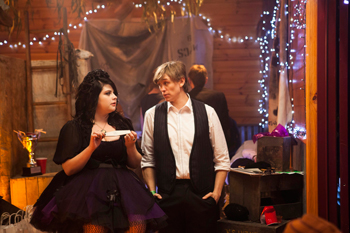 'Sony were great," said Gracie, 'and unusually for an Australian feature, we also had several songs written specifically us, including one written and performed in the film by Brooke McClymont of The McClymonts (one of Australia's top country bands).
'Sony were great," said Gracie, 'and unusually for an Australian feature, we also had several songs written specifically us, including one written and performed in the film by Brooke McClymont of The McClymonts (one of Australia's top country bands). Added Redman, 'We also worked with singer/songwriter Taylor Henderson, who wrote another original song and performs at the B&S Ball with his band. The day we shot the music performance scenes was one of my favourites, as we had big crowds and there was a huge amount of energy in the air. And the music will really help audiences identify with Spin Out, as ultimately it's a film about love. It's not only following Billy and Lucy's relationship but also the relationships of many peripheral characters and the way in which they support and cherish each other. It really helps to establish the film's tone.
Filmed entirely on location in the Victorian regional town of Shepparton, Spin Out commenced its twenty-four day shoot on 13 August, 2015, leaving the town's locals with many fond memories by the time production wrapped in September.
'I would love," said Tim Ferguson, 'for people to leave the cinema with a desire to move to, or visit the bush for a holiday - to see the Australian countryside for themselves. There's so much there and not just in terms of the beautiful landscape, but also the wonderful people who live in those places and the warm Australian culture which everyone deserves to experience. For me, that would make the whole enterprise worthwhile."
Spin Out
Release Date: September 15th, 2016
MORE
- Mission: Impossible Fallout
- Glenn Close The Wife
- Allison Chhorn Stanley's Mouth Interview
- Benicio Del Toro Sicario: Day of the Soldado
- Dame Judi Dench Tea With The Dames
- Sandra Bullock Ocean's 8
- Chris Pratt Jurassic World: Fallen Kingdom
- Claudia Sangiorgi Dalimore and Michelle Grace...
- Rachel McAdams Disobedience Interview
- Sebastián Lelio and Alessandro Nivola...
- Perri Cummings Trench Interview



